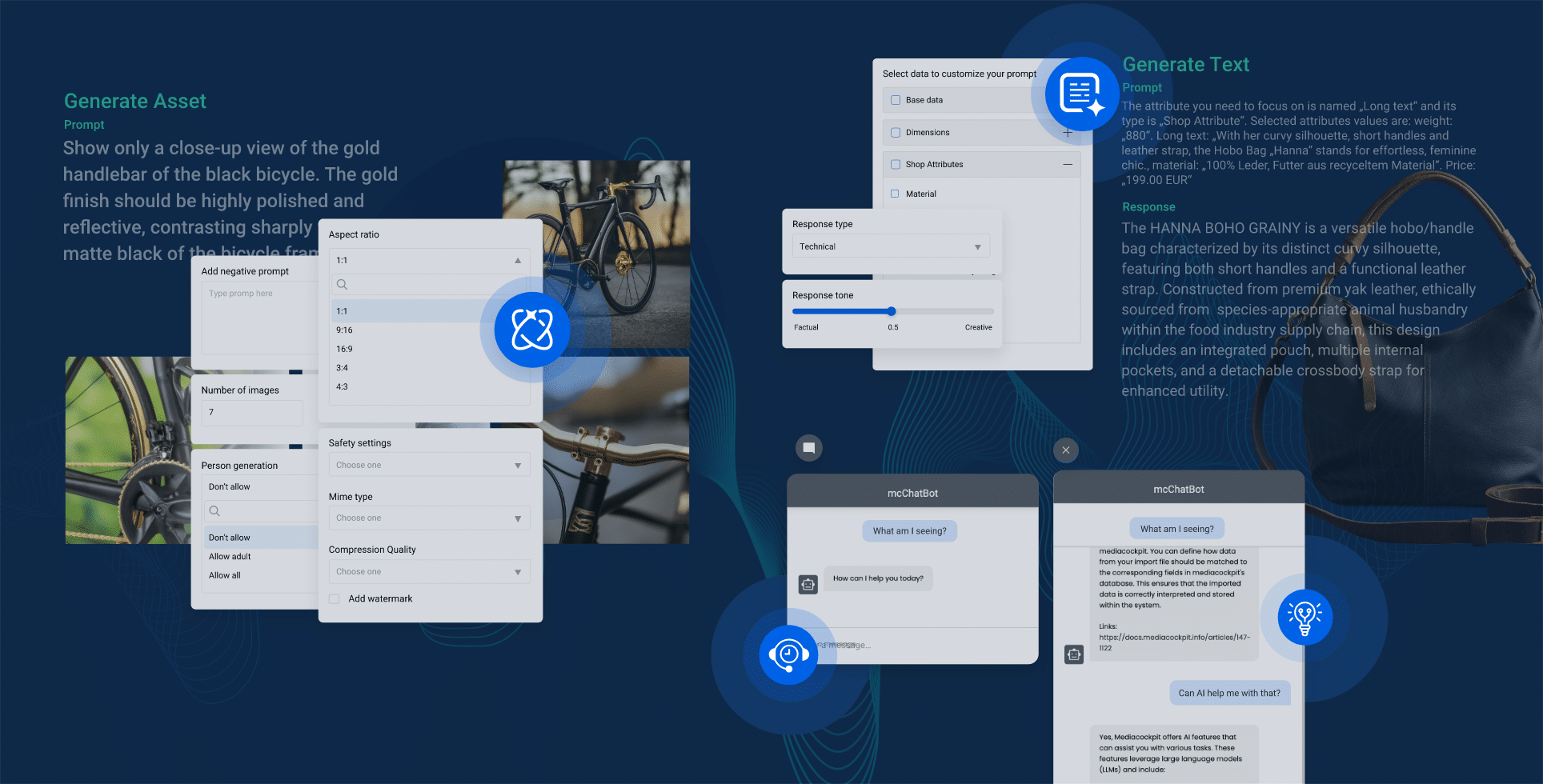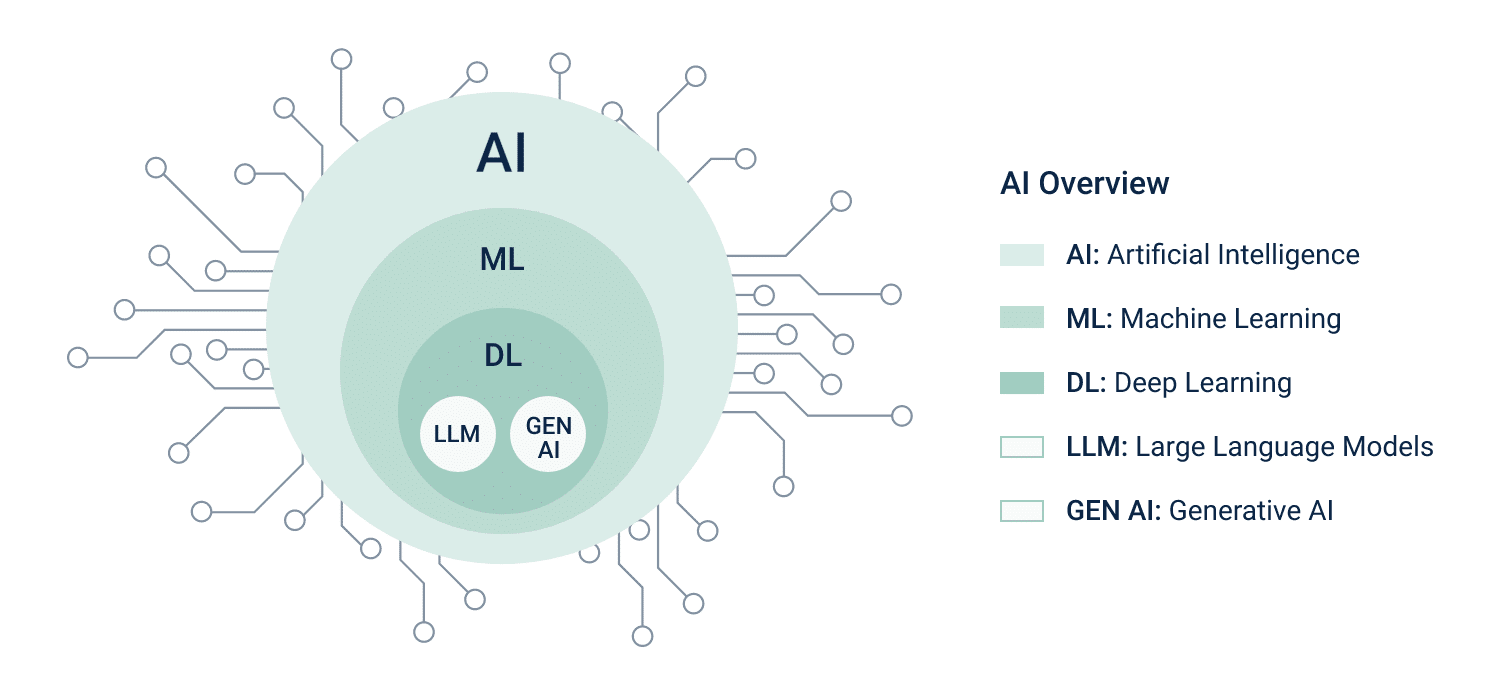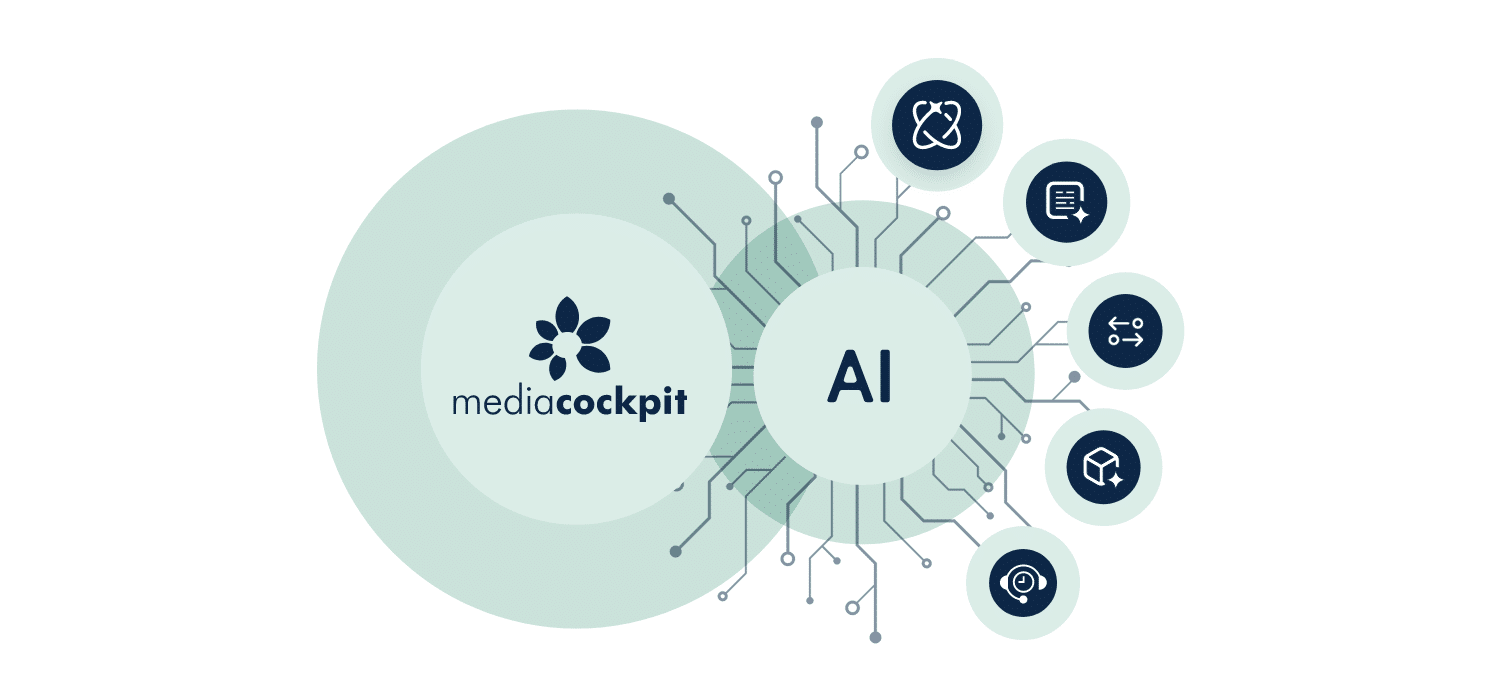Blog
How Artificial Intelligence
Optimizes Your Product Content Management

Artificial Intelligence (AI) is no longer just a buzzword. What once sounded like a distant future is now reality, shaping many areas of business — from the way we search for products to the complex management of product data.
But how exactly is AI changing the rules of the game for product information and search engines? More importantly: how can we leverage this technology to simplify and scale product data management?
In this article, we’ll explain the different types of Artificial Intelligence and then dive into how AI functions as an intelligent assistant within a PIM system, helping to address the challenges of modern product data management.
What is Artificial Intelligence?
Artificial Intelligence (AI) has been a hot topic for years, and the pace of innovation in this field makes it increasingly difficult to keep up. Many terms are often used interchangeably or incorrectly. That’s why we’ll first cover the basics and outline where AI is currently being applied.
Anyone exploring the topic of AI will quickly encounter terms such as Deep Learning, Large Language Models (LLMs), and Generative AI. Below, we break down these approaches with clear explanations and examples.

What is Deep Learning?
Deep Learning is a subset of machine learning that uses artificial neural networks with many layers to identify complex patterns in large datasets. Inspired by the human brain, these networks learn by processing vast amounts of data.
Deep Learning forms the technical foundation of most modern AI systems, including LLMs and Generative AI.
What are Large Language Models (LLMs)?
LLMs are advanced deep-learning models specialized in text. They “learn” from massive amounts of data — often billions of words — how language works. Trained to predict the next word based on probability, they generate fluent, meaningful text.
An LLM is a specific form of deep-learning model focused on natural language processing.
What is Generative AI?
An LLM is a specific form of deep-learning model focused on natural language processing.
Generative AI includes models such as LLMs for text generation and diffusion models for image creation. While the methods differ, they all share the goal of producing new content.
AI in Business: Integrated Into Enterprise Systems
Beyond using standalone tools like ChatGPT or Midjourney, AI technologies are increasingly being embedded directly into enterprise software. This allows users to benefit from AI capabilities within the systems they already use.
When it comes to product data management, companies using a PIM system have a clear competitive advantage.
Businesses selling products online must ensure their product data is:
This has always been important, but in the era of AI it is absolutely critical. Online search is evolving: traditional keyword-based searches within shops and marketplaces are losing ground, while AI-driven searches that surface results directly, without linking back to the store, are becoming more relevant.
The rule is clear: only companies providing machine-readable, accurate, and high-quality product data will be included in AI-driven results. Without a solid data foundation, products will simply not appear.
Even aside from AI, complete, accurate, and up-to-date product data remains essential for driving purchasing decisions.
AI in mediacockpit PIM & DAM
PIM systems go beyond basic data management — especially when enhanced with integrated AI.
For example, text can be created directly in a PIM system, without first drafting content in a separate tool and then manually importing it. Similarly, images can be generated and assigned to products directly within the DAM.
Below, we outline how AI is integrated into mediacockpit PIM & DAM by Bertsch Innovation, with examples of how marketers, product managers, and sales teams benefit from combining PIM and AI in their daily work.

1. Advanced AI-Based Text Generation: Content That Sells
The most common application of AI today is text generation. Integrated into mediacockpit, AI text generation enables users to save substantial amounts of time.
According to a Deloitte study, German companies expect Generative AI to primarily deliver productivity gains (53%) and cost reductions (35%).
Whether product descriptions, marketing copy, SEO metadata, or alt text — AI generates content, suggests translations, and inserts them in the right place within PIM or DAM. The result is clear: faster processes and higher efficiency.
Your benefits at a glance:
- Content creation in minutes, saving time across thousands of product variants
- Brand consistency ensured through predefined tone and style guidelines
- Editable outputs that can be refined directly in the tool
- Integrated multilingual translation, drastically reducing translation time
2. AI-Driven Image Generation in mediasuite: Visual Content on Demand
Alongside text, AI is also transforming image generation. Within mediasuite, the DAM integrated in mediacockpit, users can generate product or campaign images directly via text prompts — without third-party tools. Prompts can be stored, and parameters easily adjusted.
Your benefits at a glance:
- On-demand creativity: mockups, variants, and hero shots in minutes, not days
- Seamless asset management: generated images are instantly stored in the DAM
- Faster time-to-market through rapid image creation
- Greater flexibility for producing campaign assets as needed
But integrated AI doesn’t just help with creating new texts and images. It also holds enormous potential for the time-consuming and often tedious task of assigning attributes to products.
3. AI-Assisted Field Mapping: Import Profiles in Seconds
During data import, AI automatically recognizes column headers in Excel or CSV files and assigns them to the appropriate attributes in mediacockpit. It also accounts for data types, synonyms, and translations.
Your benefits at a glance:
- Zero-click mapping: import profiles are pre-filled and ready for review
- Fewer errors through intelligent attribute matching
- Faster go-lives: supplier data is imported cleanly within minutes
- Minimal manual effort in data import
Summary: How AI Eases Product Content Management
The opportunities AI provides today — and will continue to provide in the future — create massive potential for efficiency gains. However, simply using as many tools as possible can be counterproductive. Companies should define a clear strategy and objectives for their use of AI to avoid fragmentation.
AI capabilities embedded in software solutions that businesses already rely on offer the greatest benefits and reliability.
Product Content Management (PCM) is a broad field. Companies still working across multiple systems such as ERP and Excel know how time-consuming and error-prone this can be.
With a solution like mediacockpit — designed specifically for PCM — companies gain significant advantages. Continuous updates, enhancements, and integration of AI-driven features further multiply these benefits.
| Task | How AI Helps |
|---|---|
| Text creation | Automatically generated or suggested copy for product descriptions, SEO, metadata |
| Image management | Generation of new assets, auto-tagging, image recognition |
| Import/Mapping | Automatic field assignment, profile recommendations |
| Translation | Fast, consistent machine translations |
| Data Quality | Pattern recognition, error detection, suggestions for improvements |
| Channel syndication | Channel-specific optimization, attribute adjustment suggestions |
Conclusion: More Time for Value Creation
By consistently integrating AI features into mediacockpit, routine tasks are minimized. At the same time, data quality improves, and content is distributed faster and more precisely across all relevant sales channels.
In short: with mediacockpit and its integrated AI functions, you gain time to focus on the areas that truly drive your business forward.
Curious? Test the AI features live in a personalized demo and experience firsthand how mediacockpit simplifies your product data processes.
Highlighted Whitepaper
ePaper: Strategic Product Content Management with PIM & DAM
Hoe je je product content management duurzaam kunt optimaliseren: in onze whitepaper laten we je zien hoe je je processen kunt optimaliseren met een PIM & DAM – inclusief waardevolle inzichten en beproefde strategieën.
Samen meer bereiken
Wij geloven in de waarde van samenwerking en uitwisseling. Dit geldt zowel de projecten met onze klanten, waaruit we veel waardevolle inzichten genereren voor onze productontwikkeling, als voor ons groeiende partnernetwerk, waarmee we onze klanten ondersteunen bij hun digitalisering.



